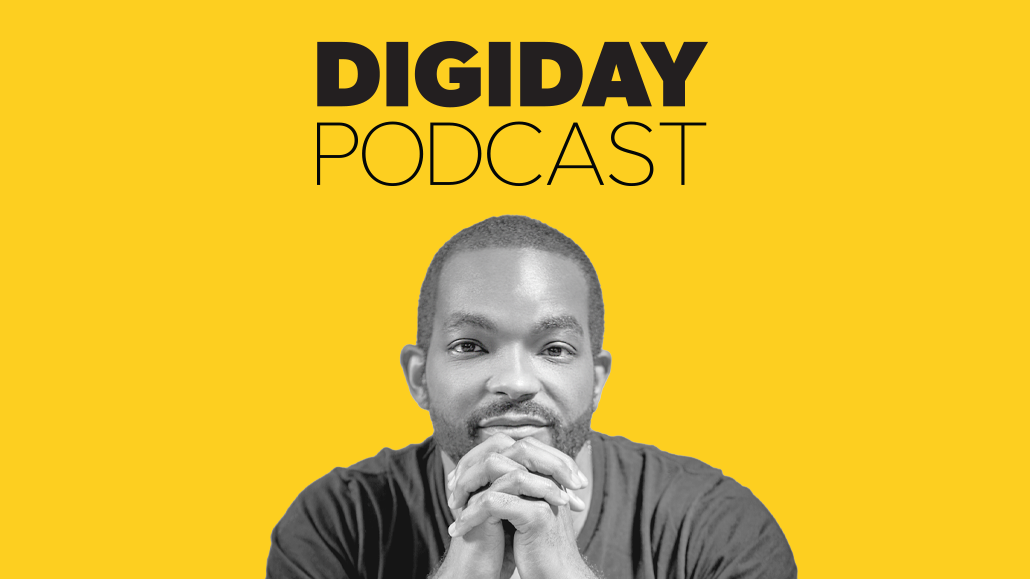Save 50% on a 3-month Digiday+ membership. Ends Dec 5.
Revolt’s Detavio Samuels says advertisers have fallen short on commitments to Black-owned media companies

Subscribe: Apple Podcasts • Spotify
Nearly three years after advertisers and agencies pledged to diversify their spending to support Black-owned media companies, there remains a shortfall in the amount of money actually making it to Black-owned media businesses.
“We’ve definitely seen movement and momentum. But without question, I think that they have fallen very short from the promises that they’ve made. And even this year, with all the talk about the recession and with all of the cuts, I think even their desire to deliver on those commitments are even smaller,” said Detavio Samuels, CEO of Revolt on the latest episode of the Digiday Podcast.
As a Black-owned media company that was founded by Sean Combs and operates a TV network as well as streaming and digital properties, Revolt has worked to address one of advertisers’ top complaints: “That there was not enough inventory in Black-owned media in order to deliver against the commitments,” Samuels said. Among those efforts have been Revolt’s launches of free, ad-supported streaming TV channels across services including most recently Vizio’s WatchFree+.
“There are thousands of FAST channels that exist today. But when you look at those FAST channels, most of the platforms that have FAST channels have somewhere between zero to maybe two Black content-focused channels. And so we see that as a massive opportunity,” Samuels said.
Despite advertisers’ DE&I shortcomings and the overall shrinking of the traditional TV business, Revolt’s revenues have continued to grow, and its digital revenue has surpassed its linear TV revenue despite the latter revenue stream continuing to grow.
“Now our digital revenue is much larger than our linear revenue. Over the last few years, we’ve seen our digital revenue growth about 9x to 10x, whereas our linear revenue has probably grown closer to 4x to 5x. And so streaming and digital is without question the biggest portion of our business right now,” Samuels said.
Ad position: web_incontent_pos1
Here are a few highlights from the conversation, which have been edited for length and clarity.
Digital revenue dominance
Streaming and digital is without question the biggest portion of our business right now. When you look at [Revolt’s overall revenue] last year, let’s call it five-eighths digital and three-eighths linear.
Streaming subscription saturation
We see subscription as an opportunity. But as you know, the subscription market is just highly saturated. And for those people who know the difference between a red ocean and a blue ocean, I very much see the subscription business as a red ocean where you have several massive players competing. It’s no longer about growing the market; it’s about stealing share.
Ad position: web_incontent_pos2
Keeping score of advertisers’ commitments
What most advertisers haven’t done is come up with a scorecard. There’s no transparency. And so we are working with third parties to come up with some sort of scorecard that can showcase whether brands have been increasing their spend with Black-owned media over the last few years or not.
DE&I dollars in an economic downturn
My business training always taught me that, when you need to make cuts, you go for the biggest piece of the pie. And so I don’t understand how advertisers and brands — even if they are having to do cuts — still can’t get to 2-3-4-5-6-7-8% [of their budgets being spent] on Black-owned media. And so that is absolutely a concern. And so we’re going to keep the pressure on advertisers and brands to make sure they deliver against the commitments that they made.
More in Future of TV

Future of TV Briefing: The streaming ad upfront trends, programmatic priorities revealed in Q3 2025 earnings reports
This week’s Future of TV Briefing looks at what TV and streaming companies’ latest quarterly earnings report indicate about the state of the streaming ad market.

Future of TV Briefing: The creator economy needs a new currency for brand deals
This week’s Future of TV Briefing looks at why paying creators based on reach misses the mark and what IAB is doing to clear up the creator-brand currency situation.

Future of TV Briefing: WTF is IAB Tech Lab’s device attestation tactic to combat CTV ad fraud?
This week’s Future of TV Briefing breaks down the CTV ad industry’s new tool for fighting device spoofing.
Ad position: web_bfu



